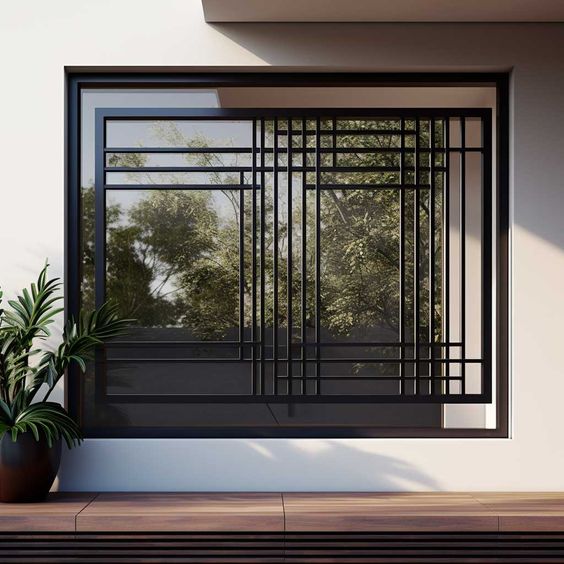Grilling is more than just a cooking method; it is an experience that blends the joy of outdoor living with the art of culinary creation. Designing a home grill that is both aesthetically pleasing and functionally superior requires careful consideration and planning. In this article, we explore the key aspects of home grill design, focusing on elements that enhance both the visual appeal and the usability of your outdoor cooking space. Home Grill Design
Understanding the Basics of Grill Design
Types of Grills
The first step in designing your perfect home grill is choosing the right type of grill. There are several types to consider, each with its own advantages and aesthetic qualities:
Charcoal Grills: These grills offer a traditional grilling experience with rich, smoky flavors. They are typically designed with classic lines and often feature a rustic look.
Gas Grills: Known for their convenience and control, gas grills can be sleek and modern, fitting well with contemporary outdoor spaces.
Electric Grills: Ideal for areas where open flames are not allowed, electric grills are compact and can be designed to blend seamlessly with urban outdoor settings.
Pellet Grills: Combining the best of both worlds, pellet grills use wood pellets to provide a unique flavor while offering the convenience of electric controls.
Material Selection
The materials used in your grill’s construction are crucial for both its durability and aesthetic appeal. Common materials include:
Stainless Steel: Highly durable and resistant to rust, stainless steel provides a sleek, modern look.
Cast Iron: Known for excellent heat retention, cast iron grills offer a classic, robust appearance.
- Ceramic: Often used in kamado grills, ceramic is excellent for heat insulation and adds a unique, stylish touch.
Design and Layout
The design and layout of your grill should complement your outdoor space. Consider the following elements:
Size and Scale: Ensure that your grill is proportionate to your outdoor area. A large grill in a small space can overwhelm the area, while a small grill might get lost in a larger setting.
Placement: Position your grill in a spot that allows for optimal airflow and safety. It should be easily accessible but not too close to seating areas to avoid smoke and heat issues.
Integration with Outdoor Kitchen: If you have an outdoor kitchen, your grill should seamlessly integrate with other elements like countertops, storage, and sinks.
Enhancing Aesthetic Appeal
Stylish Features
Incorporate stylish features to elevate the look of your grill:
Custom Finishes: Choose custom finishes like powder-coated colors, textured metals, or decorative tiles to match your outdoor decor.
Lighting: Adding built-in lighting enhances both the functionality and ambiance of your grilling area. Consider LED lights for energy efficiency and longevity.
Cover Designs: Custom grill covers can protect your investment and add a personalized touch when the grill is not in use.
Landscaping and Surroundings
The surroundings of your grill play a significant role in its overall aesthetic. Enhance the area with:
Greenery: Use plants and shrubs to create a natural backdrop that complements your grill.
Paving and Decking: High-quality paving stones or decking can provide a sturdy, attractive base for your grill area.
Outdoor Furniture: Choose furniture that complements the style of your grill, creating a cohesive and inviting outdoor space.
Functional Considerations
Heat Management
Effective heat management is critical for a great grilling experience. Consider the following:
Ventilation: Proper ventilation systems ensure that smoke and heat are effectively dispersed, making your grilling experience more comfortable.
Heat Zones: Design your grill with multiple heat zones to allow for versatile cooking methods, from searing to slow cooking.
Insulation: High-quality insulation materials will help maintain consistent temperatures and improve fuel efficiency.
Ease of Use
A user-friendly grill enhances the overall experience. Key features to consider include:
Control Systems: Modern grills often come with advanced control systems, including digital thermostats and timers, for precise cooking.
Cleaning Features: Removable drip trays, non-stick surfaces, and easy-access parts make cleaning your grill a breeze.
Storage Solutions: Built-in storage for utensils, spices, and grilling accessories keeps everything you need within reach.
Safety Features
Safety is paramount when designing your home grill. Incorporate the following safety features:
Stable Construction: Ensure your grill is built with a stable base to prevent tipping.
Heat-Resistant Materials: Use heat-resistant materials for handles and surfaces that are frequently touched.
Automatic Shutoff: Consider grills with automatic shutoff features to prevent accidents.
Innovative Technologies
Smart Grills
The integration of smart technology into grill design is transforming the way we cook outdoors. Features to look for include:
Wi-Fi and Bluetooth Connectivity: Control your grill remotely using your smartphone, monitor temperatures, and receive alerts.
Integrated Apps: Some grills come with companion apps that offer recipes, cooking tips, and the ability to save your favorite settings.
Voice Control: Voice-activated controls through smart home devices can add convenience and ease of use.
Eco-Friendly Options
Sustainability is an important consideration in modern grill design. Eco-friendly features include:
Solar-Powered Grills: Harness the power of the sun to cook your meals with renewable energy.
Recycled Materials: Choose grills made from recycled or sustainable materials to reduce your environmental impact.
Energy-Efficient Designs: Look for grills designed to maximize fuel efficiency, reducing waste and emissions.
Conclusion
Designing the perfect home grill involves a harmonious blend of aesthetic appeal and functional excellence. By carefully selecting the type of grill, materials, and design features, you can create an outdoor cooking space that is both beautiful and practical. Incorporating stylish touches, considering the surrounding landscape, and integrating innovative technologies will enhance your grilling experience, making it a highlight of your outdoor living.

